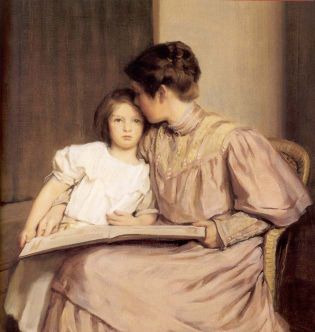
By Kari Keshmiry
When God set the world in place,
when He hung the stars up in space,
when He made the land and the sea,
then He made you and me.
He sat back and saw all that was good,
He saw things to be as they should.
Just one more blessing He had in store;
He created a mother, but whatever for?
He knew a mother would have a special place
to shine His reflection on her child’s face.
A mother will walk the extra mile
just to see her children smile.
She’ll work her fingers to the bone
to make a house into a home.
A mother is there to teach and guide,
a mother will stay right by your side.
She’ll be there through your pain and strife,
she’ll stay constant in your life.
A mother will lend a helping hand
until you have the strength to stand.
She’ll pick you up when you are down,
when you need a friend she’ll stick around.
A mother is one who listens well,
will keep her word; will never tell.
A mother never pokes or pries
but stands quietly by your side,
giving you the strength you need,
encouraging you to succeed.
A mother is one who can be strong
when you need someone to lean on.
You’re more than a mother to me;
a reflection of Him in your face I see,
a love that knows no boundaries.
I’m glad that you chose to be
all this and more to me.
You share a love that knows no end,
you’re more than my mother,
you are my friend.
When God set the world in place,
when He hung the stars up in space,
when He made the land and the sea,
then He made you and me.
He sat back and saw all that was good,
He saw things to be as they should.
Just one more blessing He had in store;
He created a mother, but whatever for?
He knew a mother would have a special place
to shine His reflection on her child’s face.
A mother will walk the extra mile
just to see her children smile.
She’ll work her fingers to the bone
to make a house into a home.
A mother is there to teach and guide,
a mother will stay right by your side.
She’ll be there through your pain and strife,
she’ll stay constant in your life.
A mother will lend a helping hand
until you have the strength to stand.
She’ll pick you up when you are down,
when you need a friend she’ll stick around.
A mother is one who listens well,
will keep her word; will never tell.
A mother never pokes or pries
but stands quietly by your side,
giving you the strength you need,
encouraging you to succeed.
A mother is one who can be strong
when you need someone to lean on.
You’re more than a mother to me;
a reflection of Him in your face I see,
a love that knows no boundaries.
I’m glad that you chose to be
all this and more to me.
You share a love that knows no end,
you’re more than my mother,
you are my friend.

